Critical Minerals Outlooks Comparison
A report by the International Energy Forum and The Payne Institute of Public Policy at the Colorado School of Mines
Introduction
Historically, the energy sector constituted only a minor part of critical minerals supply chains and markets. However, with the acceleration of energy transitions, clean energy technologies have rapidly emerged as the segment with the fastest growth in demand.
This has captured public attention globally, and created various trade, market, and geopolitical issues. As a result, numerous analytical scenarios have been produced to better understand this rapidly changing and complex landscape.
In a future trajectory aligned with climate goals, the proportion of total minerals demand accounted for by clean energy technologies will rise significantly over the forthcoming two decades. Electric vehicles (EVs) and battery storage technologies have already superseded consumer electronics to become the largest consumers of lithium, and they are projected to surpass stainless steel to become the primary end users of nickel by 2040, and battery anodes share of graphite demand has increased 250% since 2018.
As a result, several quantitative demand models have been developed to help understand the scale of growth, and whether material shortages will become an obstacle to the deployment of clean energy technologies.
This report is a non-comprehensive meta-analysis of 11 publicly available reports which include various assumptions for energy and technology scenarios, and their resulting critical mineral requirements. This exercise is meant to highlight key insights for critical minerals decisionmakers. The reports are from eight agencies and organizations across different geographies, spanning from 2019 to 2023.
Key Charts
Figure 1 - Aluminum: energy demand transition projections
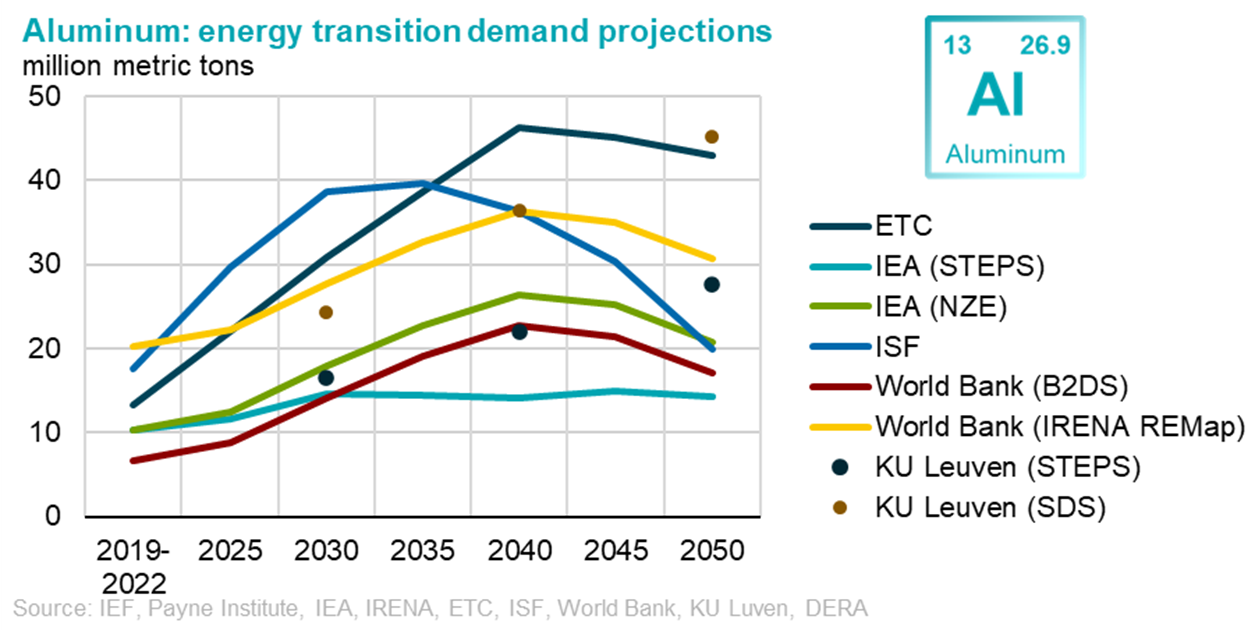 Download Figure 1
Download Figure 1 Figure 2 - Cobalt: energy demand transition projections
 Download Figure 2
Download Figure 2 Figure 3 - Copper: energy demand transition projections
 Download Figure 3
Download Figure 3 Figure 4 - Graphite: energy demand transition projections
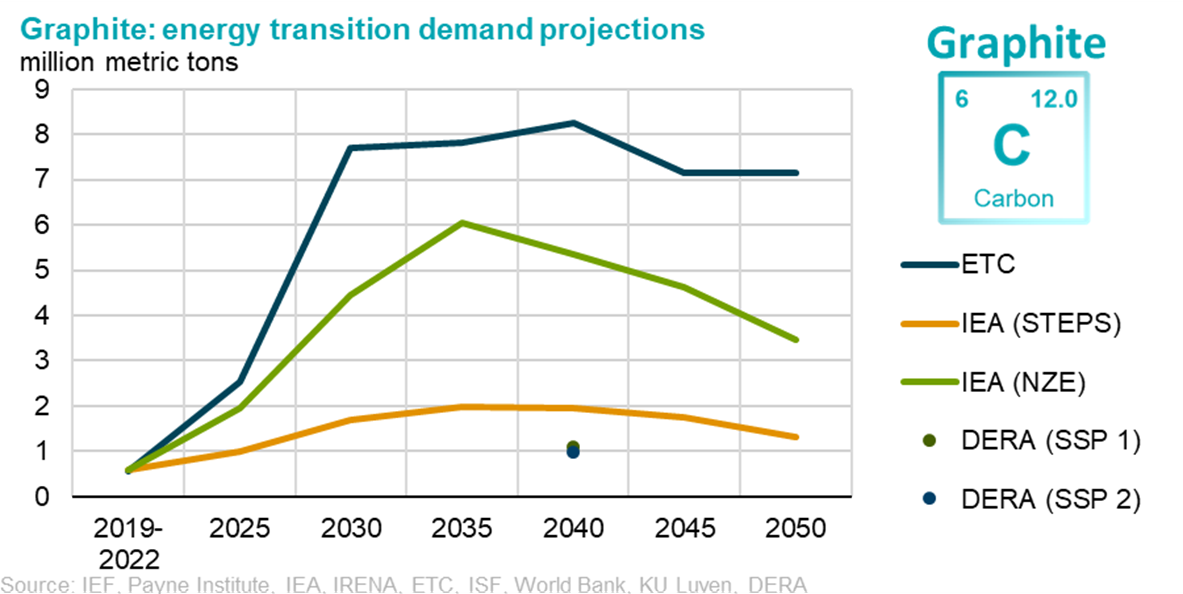 Download Figure 4
Download Figure 4 Figure 5 - Lithium: energy demand transition projections
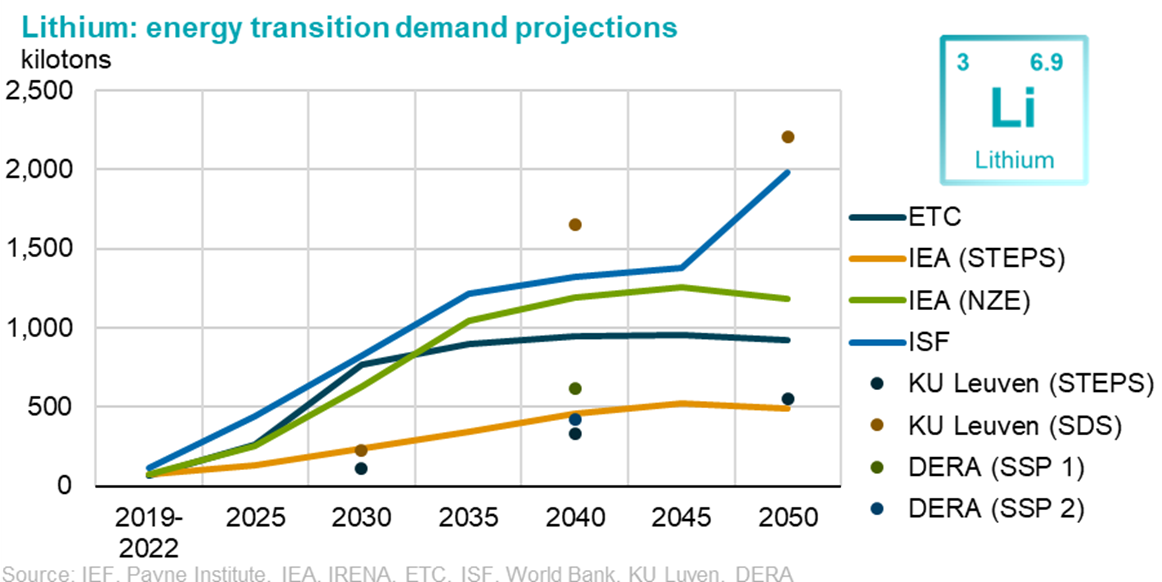 Download Figure 5
Download Figure 5 Figure 6 - Neodymium: energy demand transition projections
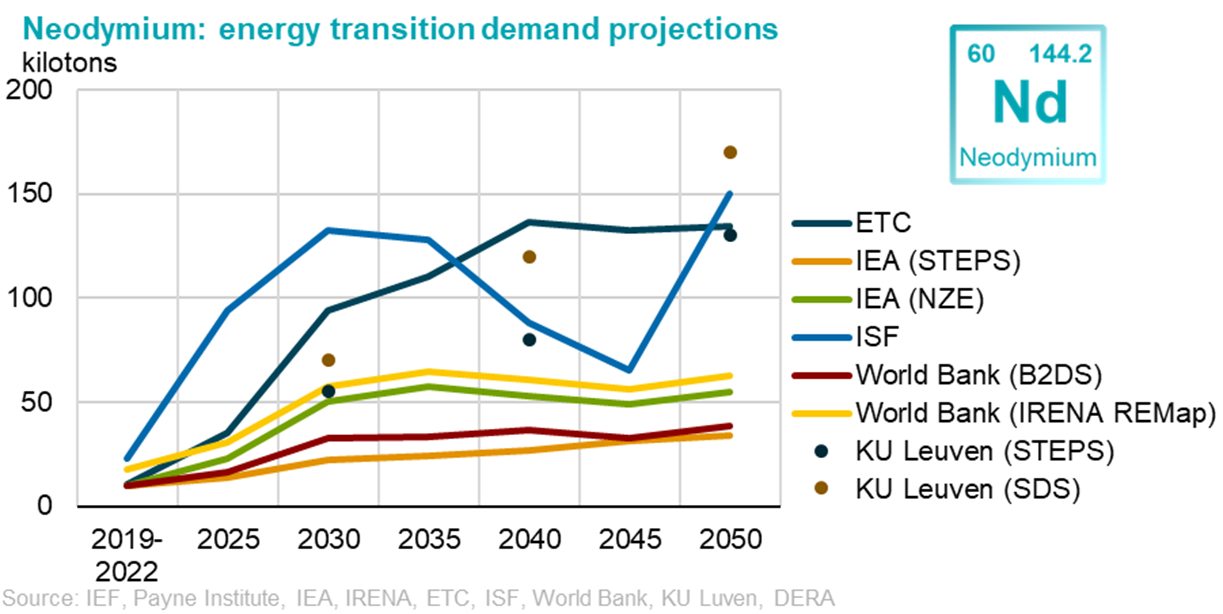 Download Figure 6
Download Figure 6 Figure 7 - Nickel: energy demand transition projections
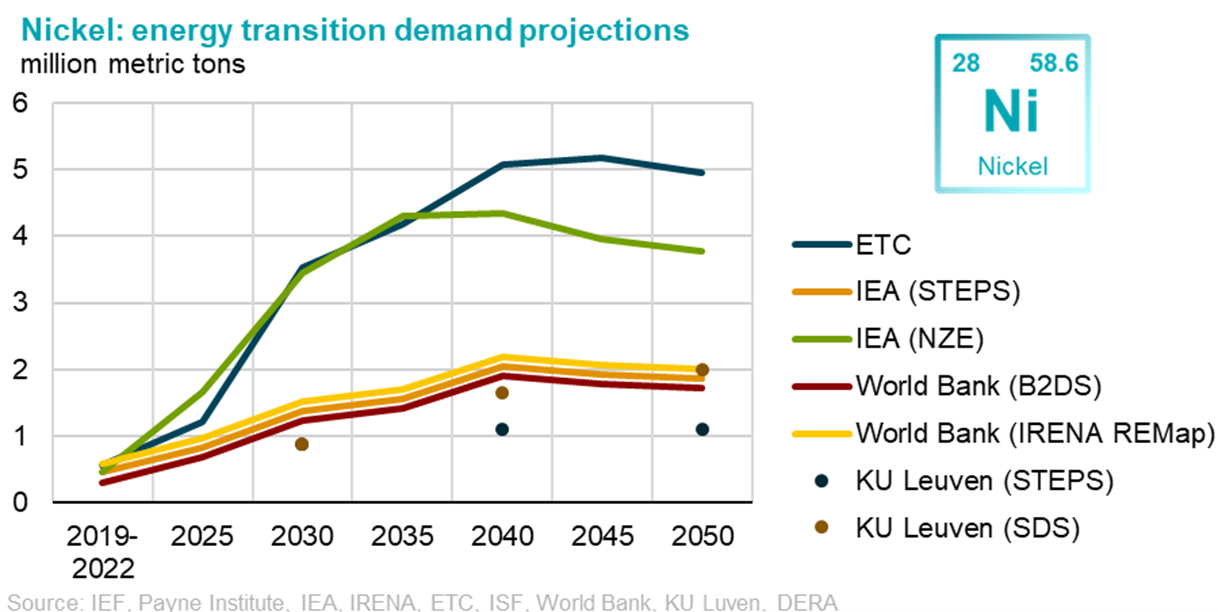 Download Figure 7
Download Figure 7 Figure 8 - Silver: energy demand transition projections
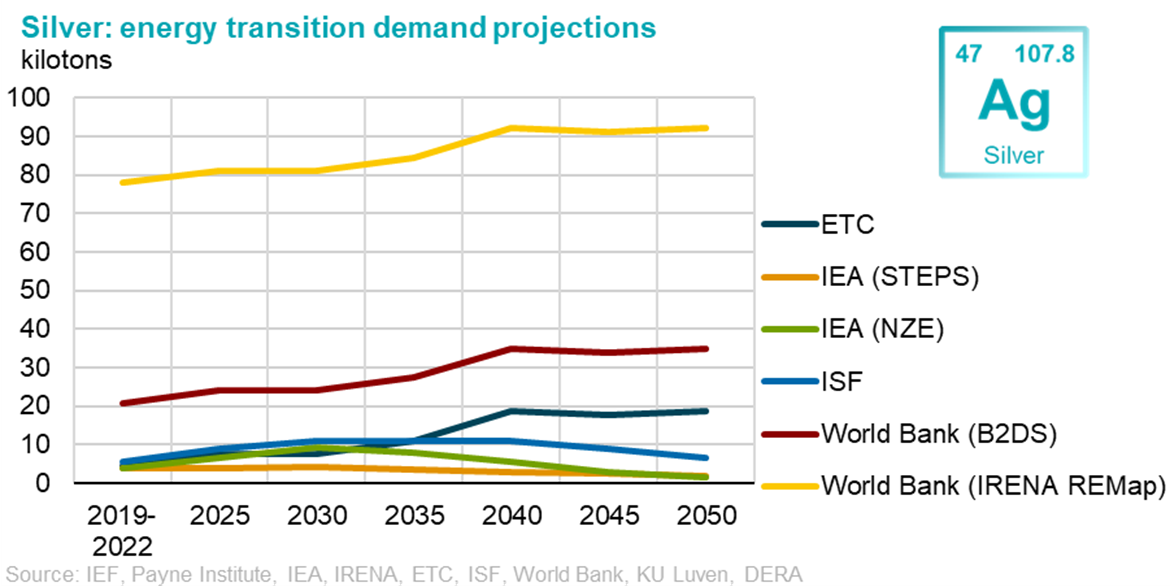 Download Figure 8
Download Figure 8 About the International Energy Forum
The International Energy Forum (IEF), the global home of energy dialogue, is the trusted and neutral intergovernmental platform for energy dialogue among member states, industry leaders, and experts. Its Ministers represent producing, consuming, and transit countries in every region, at every stage of economic development, and across both established and emerging energy-system supply chains. The IEF advances global energy security through open and inclusive dialogue spanning all fuels, technologies, and systems.
About The Payne Institute
The mission of the Payne Institute at Colorado School of Mines is to provide world-class scientific insights, helping to inform and shape public policy on earth resources, energy, and environment. The Institute was established with an endowment from Jim and Arlene Payne, and seeks to link the strong scientific and engineering research and expertise at Mines with issues related to public policy and national security. The Payne Institute extends to public policy Mines’ conviction that energy and the environment must – and can – fruitfully coexist.






